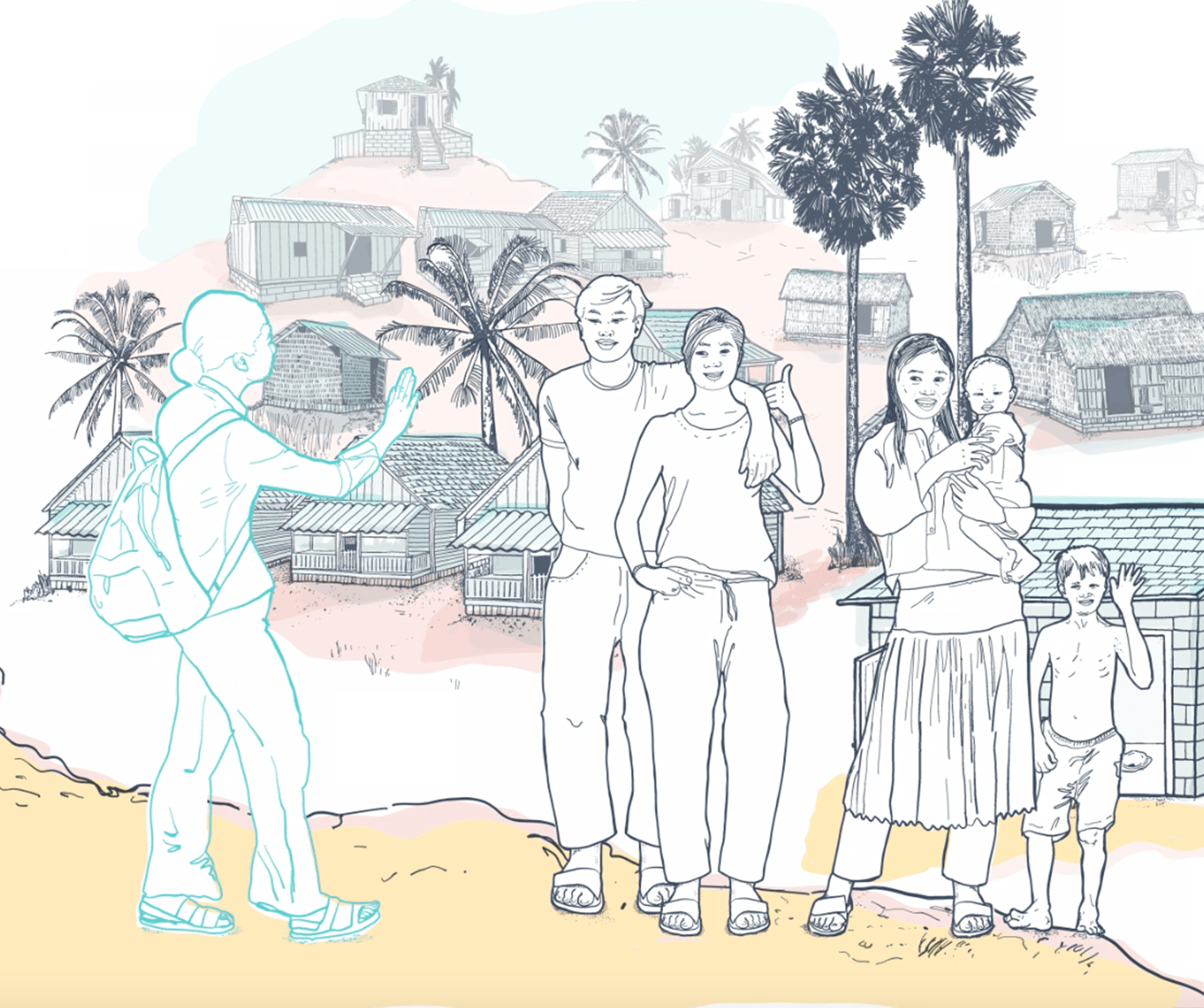The Lao People’s Democratic Republic (Lao PDR) is a landlocked, multi-ethnic country in southeast Asia with a population of 7.45 million. Although 60 per cent of rural households in the country have access to safely managed sanitation, another 28 per cent practise open defecation (WHO/UNICEF 2022). Just 46 per cent of rural households have access to basic hygiene services (ibid). Initial CLTS pilots started in 2009, and in 2019 the government of Lao PDR released national guidelines on implementation across the country – but these make no mention of climate change risks.
The University of Technology Sydney – Institute for Sustainable Futures, (UTS-ISF) and the Sanitation Learning Hub partnered with SNV Laos to pilot a CLTS process that addresses the risks of flooding to sanitation. Lao PDR was chosen due to its high exposure to flooding that is predicted to worsen with future climate change. Communities in Savannakhet province were chosen as pilot sites because of their past experiences with flooding, and because they were sites where SNV was already targeting their CLTS programming.
In Lao PDR, SNV implements a phased, district-wide approach to progressing equitable and universal access to safely managed sanitation and hygiene for 200,000 people across three districts (Atsaphone, Champhone, and Palanxay) in Savannakhet Province. SNV has been working in Savannakhet since 2018, with funding from the Government of Australia’s Water for Women aid programme, and has an established understanding of the sanitation context in the area.
This learning brief presents learnings from a practitioner’s experience of integrating climate risk considerations into a CLTS programme. The interventions were piloted across three districts of Savannakhet province with a focus on villages that have frequently experienced heavy rainfall and flooding in the past. The learning brief is intended to provide inspiration and ideas to WASH experts and practitioners with interest in integrating considerations of climate change into rural sanitation programming.
Recommendations
- Think about timing and logical sequencing when integrating consideration of climate risk into programming, and be careful not to shift away from sanitation too much.
- Only conduct climate risk activities in areas where they are relevant.
- Provide training on climate resilience to many government stakeholders at once for greater efficiency, sharing, and learning
opportunities. - Ensure inclusive participation.
- Integrate climate risk considerations from the beginning, don’t think of it as an add-on aspect.
- Climate change adaptation need not be viewed as a cumbersome, additional task for rural sanitation programming.










